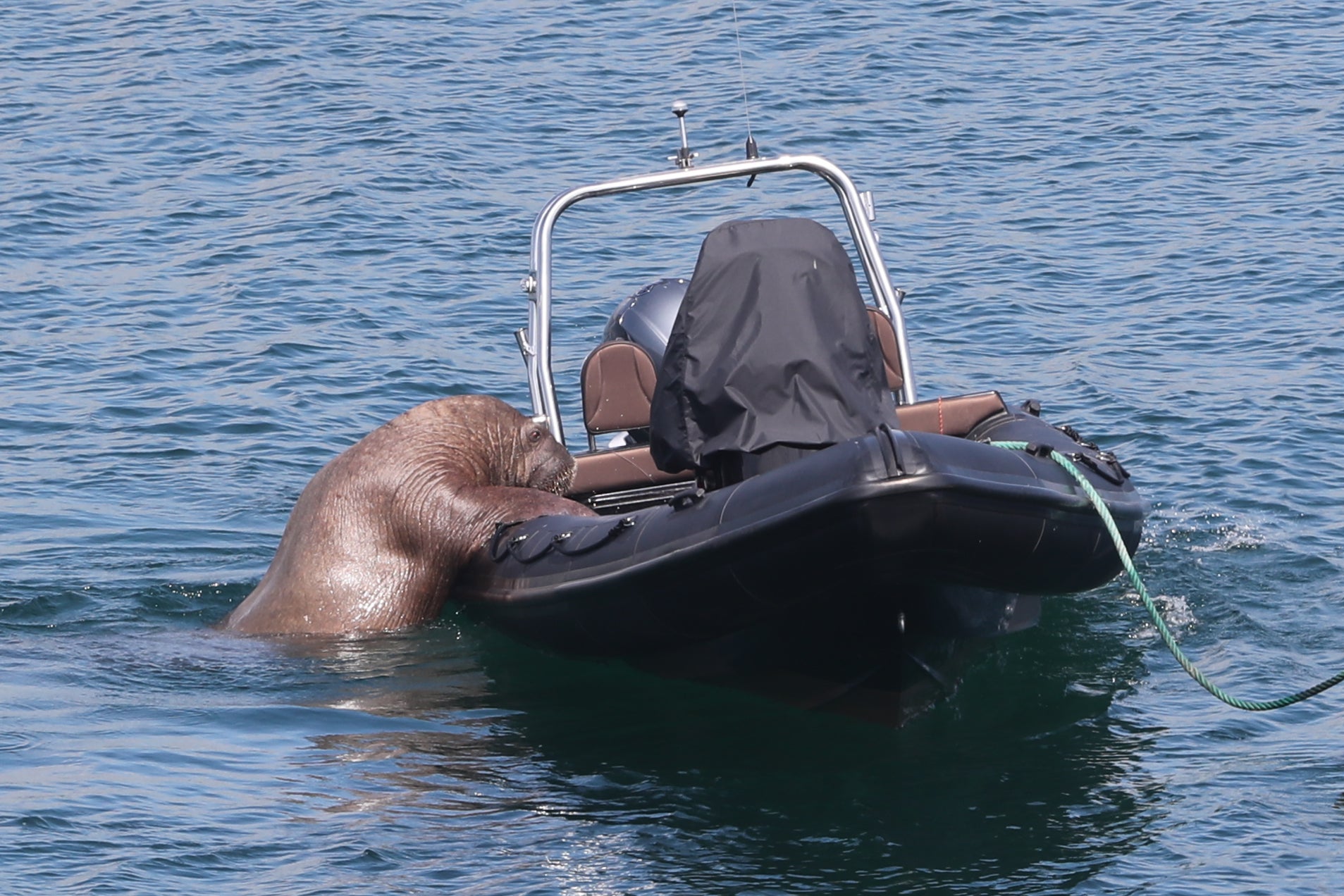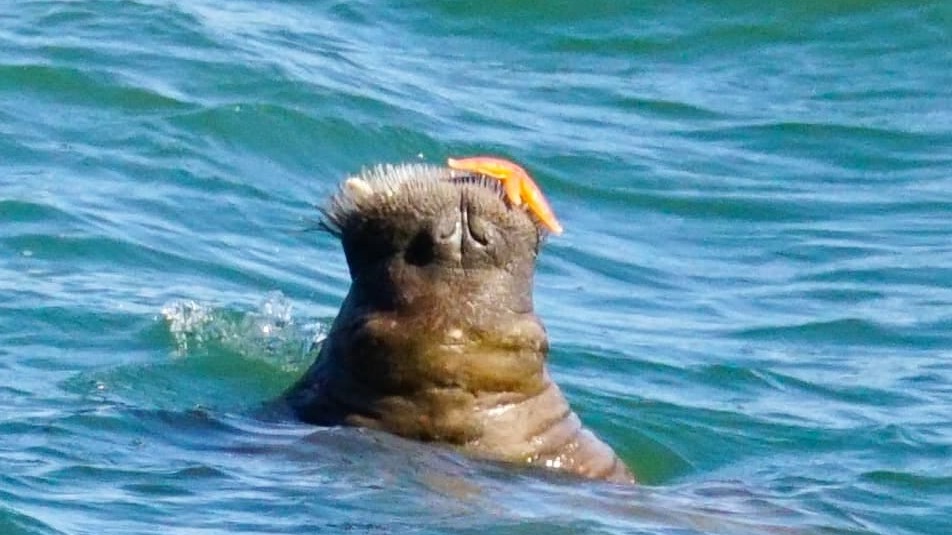

Atlantic walruses weigh on average 900kg (2000lbs), but males can weigh over a tonne and measure 3m long.
WALLY THE WALRUS FULL
Despite the size of Wally, it is thought he is not yet full grown. Male Atlantic walruses usually roam further afield than females and adolescents are much more likely to go exploring. It has now been confirmed that Wally is a male walrus, as apparent in the above photo taken by Dr Brett Lewis. It could be that Wally made a navigational error or was just curious. Although there are some suggestions it floated on an iceberg, this is extremely unlikely. The walrus is likely to be from either the east coast of Greenland or Svalbard and it still remains a mystery how the animal has ended up as far south as the British Isles. This means the walrus travelled 450km (280miles) in just six days! The Irish Whale and Dolphin Group (IWDG) confirmed that this was the same animal sighted earlier in the month on rocks in County Kerry, Ireland, and identified it by white markings on its left flipper and by the length of its tusks.

There is currently a female walrus in the Netherlands, he said, that could potentially come down the North Sea, into the Dover straits and "end up fairly quickly off the Irish coast as well".Back at the end of March, a juvenile Atlantic walrus was spotted off the Pembrokeshire coast and has subsequently become a celebrity, being nicknamed ‘Wally’. He said that there is a possibility that more walruses or 'Arctic vagrants' could appear off the Irish coast in the future. Mr Whooley said that Wally's journey is a good example of citizen science and how members of the public can help improve understanding of these animals. "And then the more likely destination is to make that 300km passage from Northern Iceland in a westerly direction that will take him to Greenland, where he will find plenty of walruses and perhaps even his clan," he said.

He still has to get up to Northern Iceland, which will take him within the Arctic Circle. He added that walruses are almost as rare in Iceland as they are in Ireland. Mr Whooley said that they are confident the walrus in Iceland is Wally because the same blemish can be seen on the animal's right flipper. Not bad for an animal that people thought was injured."

He said: "That would have been a minimum journey of 1,5000-1,600km, so it's a really impressive passage to make in the space of 19 days and that works out an average of 80km a day or about three-and-a-half kilometres per hour, which is really impressive swimming. It appears that the animal went for a big ocean swim before ending up in Iceland. Mr Whooley said Wally was last seen in Crookhaven in West Cork on 30 August, before completely disappearing off the radar, which was very surprising. "It's really interesting and yet it's a wonderful mystery all at the same time," Padraig Whooley told RTÉ's Morning Ireland. "Thanks to his ability to feed and rest, he has successfully made the long stretch and will hopefully reunite with his own kind again soon."Ī Sightings Officer with the Irish Whale and Dolphin Group has said Wally does not appear to be lost, but he does appear to be backtracking on himself as he heads home to Greenland. "We are so grateful to the many members of the public who have shown support and love for this walrus by giving him a safe place to rest and gather his strength while visiting our shores ahead of this magnificent journey. The organisation said Wally was seen "swimming back out to sea last night (and even managed to avoid sinking any boats while he was there)". Wally's last known location was off the coast of west Cork, 900km from where he has recently been photographed. The intrepid explorer also made headlines for climbing aboard or sinking a number of boats in harbours he visited. Picture: Hafrún Eiríks / Höfn (instagram 3/7 /yK91CJJEiH We are absolutely over the moon that he's not only still alive and well, but he is well on his way home to the Arctic It has been confirmed that THIS IS WALLY! Notice the similar scars on the front of both front flippers. He has since travelled 4,000km along the coast of western Europe, being spotted in France, Spain and the UK. The Arctic walrus was first spotted in Ireland off the coast of Valentia Island in March.
WALLY THE WALRUS SERIES
In a series of tweets last night, the organisation said it had compared photographs of the mammal from British Divers Marine Life Rescue and confirmed that the walrus sighted yesterday was Wally. Seal Rescue Ireland has said Wally the Walrus has been photographed in Iceland.


 0 kommentar(er)
0 kommentar(er)
